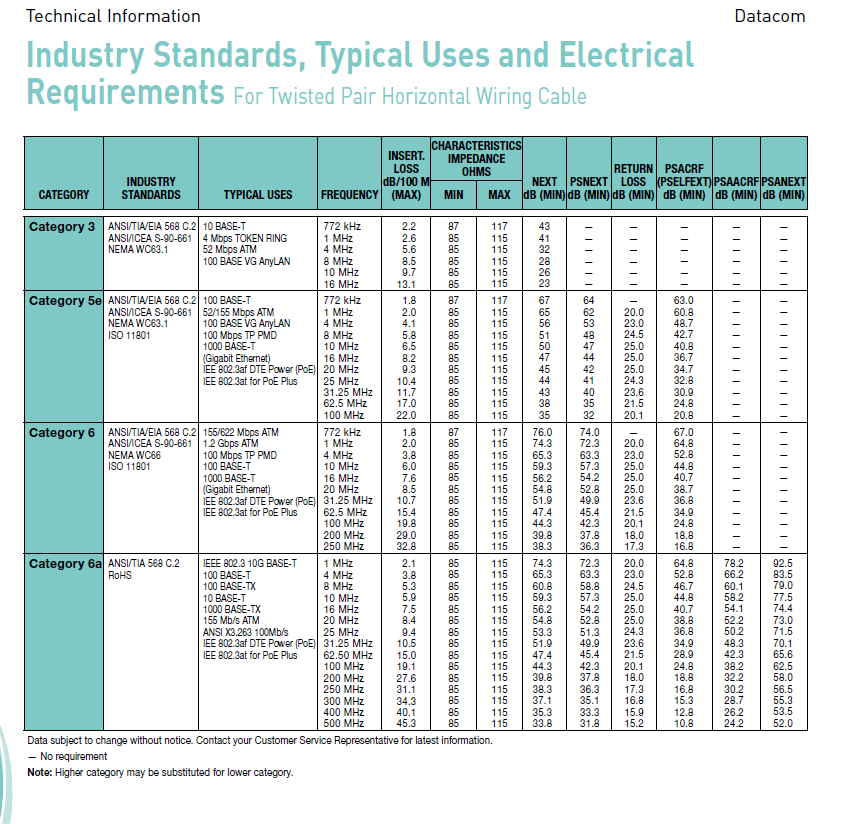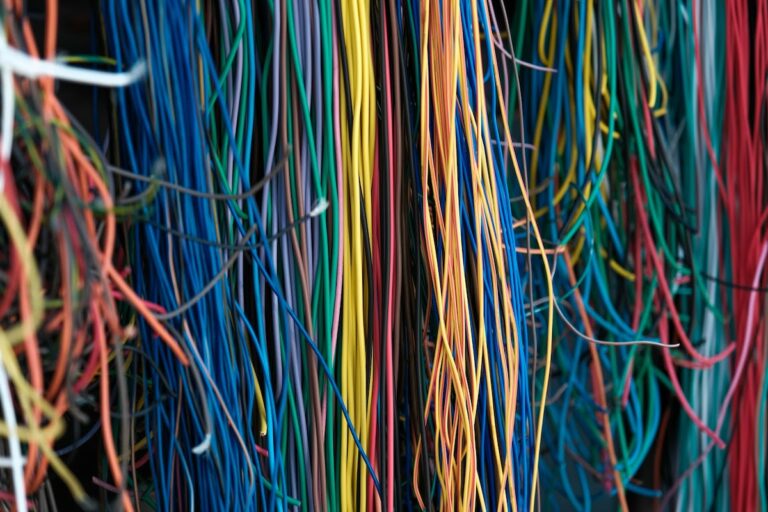Category 5 Standard Ratified 1995 (22 years old)
Category 5e Standard Ratified 1999 (18 Years old)
Category 6 Standard Ratified 2002 (15 years old)
Category 6A Standard Ratified 2009 (8 years old)
What is the general difference between Category 5e and Category 6 UTP Cable?
The general difference between Category 5e and Category 6 is in the transmission performance, and extension of the available bandwidth from 100 MHz for Category 5e to 250 MHz for Category 6. Doubling the bandwidth is like adding twice the number of lanes on a highway. These improvements provide a higher signal-to-noise ratio, allowing higher reliability for current applications and higher data rates for future applications. The Cat 6 Cable is 23 AWG gauge vs 24 AWG for Cat5e.
Are the connectors for Category 5e and Category 6 different?
Although Category 6 and Category 5e connectors may look alike, Category 6 connectors have much better transmission performance. For example, at 100 MHz, NEXT of a Category 5e connector is 43 decibels (dB), while NEXT of a Category 6 connector is 54 dB. This means that a Cat 6 connector couples about 1/12 of the power that a Cat 5e connector couples from one pair to another pair. Conversely, one can say that a category 6 connector is 12 times less “noisy” compared to a Category 5e connector. This vast improvement in performance was achieved with new technology, new processes, better materials and significant R&D resources, leading to higher costs for manufacturers.
What is the difference between Enhanced Category 5e cable rated for 400 MHz and Category 6 cable rated for 250 MHz?
Category 5e requirements are specified up to 100 MHz. Cables can be tested up to any frequency that is supported by the test equipment, but such measurements are meaningless without the context of applications and cabling standards. The category 6 standard sets minimum requirements up to 250 MHz for cables, connecting hardware, patch cords, channels and permanent links, and therefore guarantees reasonable performance that can be utilized by applications.
What is the future for Cable?
Category 7 standard exists for International and European Nations. Category 8 standard is most likely for the United States.

Geoff Cann
Training and Support Specialist
www.centratel.net
727-319-0671 (office)
gcann@centratel.net


